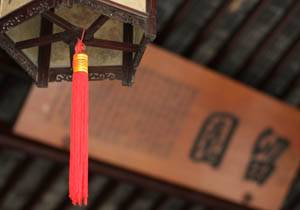Lingering Garden

The Lingering Garden, one of the four classic gardens in Suzhou (with the other three being Canglang Pavilion, Lion Forest Garden and the Humble Administrator's Garden), is located outside the Changmen gate of Suzhou. First built as early as 1593 by a official then called Xu Taishi, it was named Eastern Garden at that time, a main part of today's Lingering Garden. When another official of Qianlong reign purchased and built the Hanbi Mountain Villa, it was called Liu Yuan Garden to his surname. The Garden was got its current name, a homophone of Liu Yuan Garden, after being reconstructed and extended in Qing Dynasty. After several destruction and repair, abandoned by the last private owner in 1911, it was listed on World Heritage Site by UNESCO in 1997.
Covering an area of 23,210 square meters (about 5.7 acres), the Garden is divided into four parts, the center, the east, the south, and the west. The central area, one third of which is occupied by buildings, is the essence of the Garden. Here is where Liu's Hanbi Mountain Villa located, centered by the Guangchi Pond. To the Pond's northwest are rockeries, on top of which stands a pavilion, a place to enjoy a panoramic view of the pond and nearby structures like the Hanbi Mountain Villa, the Pellucid Tower, the Green Shade Pavilion, the Zigzag Stream Tower, the Hao Pu Pavilion, and the Refreshing Breeze Pavilion.
To the east of Zigzag Stream Tower stands the Celestial Hall of Five Peak, the biggest hall among all Suzhou's classic gardens and the chief structure of the eastern part. Another structure called the Return-to-Read Study, interior elaborately decorated, is also suggested, with the famous rockery called Auspicious Cloud Capped Peak in the north and the admirable Crane House, the Small Garden of Stone Forest, a collection of scholar stones, in the rear. Right next to the Auspicious Cloud Capped Peak is the Pavilion of Good sunshine, the beginning of southern part, where idyllic scenes like straw sheds are expected. The western part is well known for its strangely shaped stones. All these parts are connected by a 700-meter long corridor (about 765.5 square yards).
Featuring typical Suzhou classic gardens' built elements like flowers of peonies, trees, rockeries mingling with pavilions, corridors and bridges, different parts have distinctive characteristics, though they share one main featureviews being rich in changes when seen from different angles, a reflection of designers' ingenuity. You may not miss it.